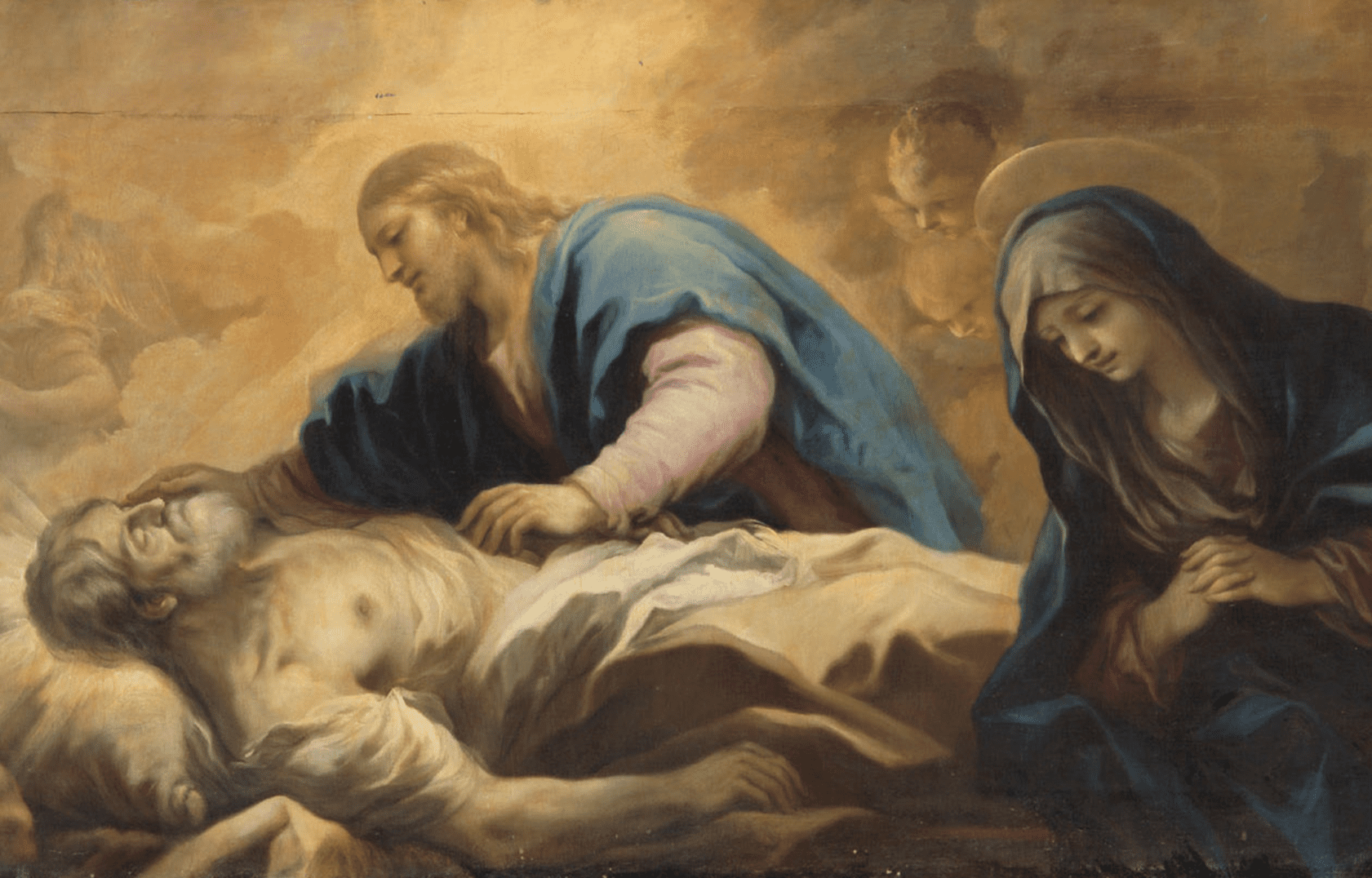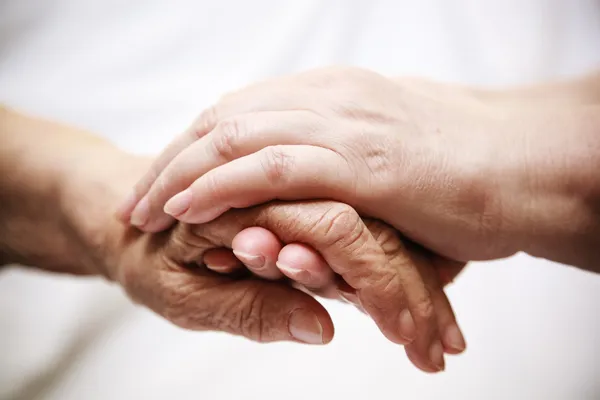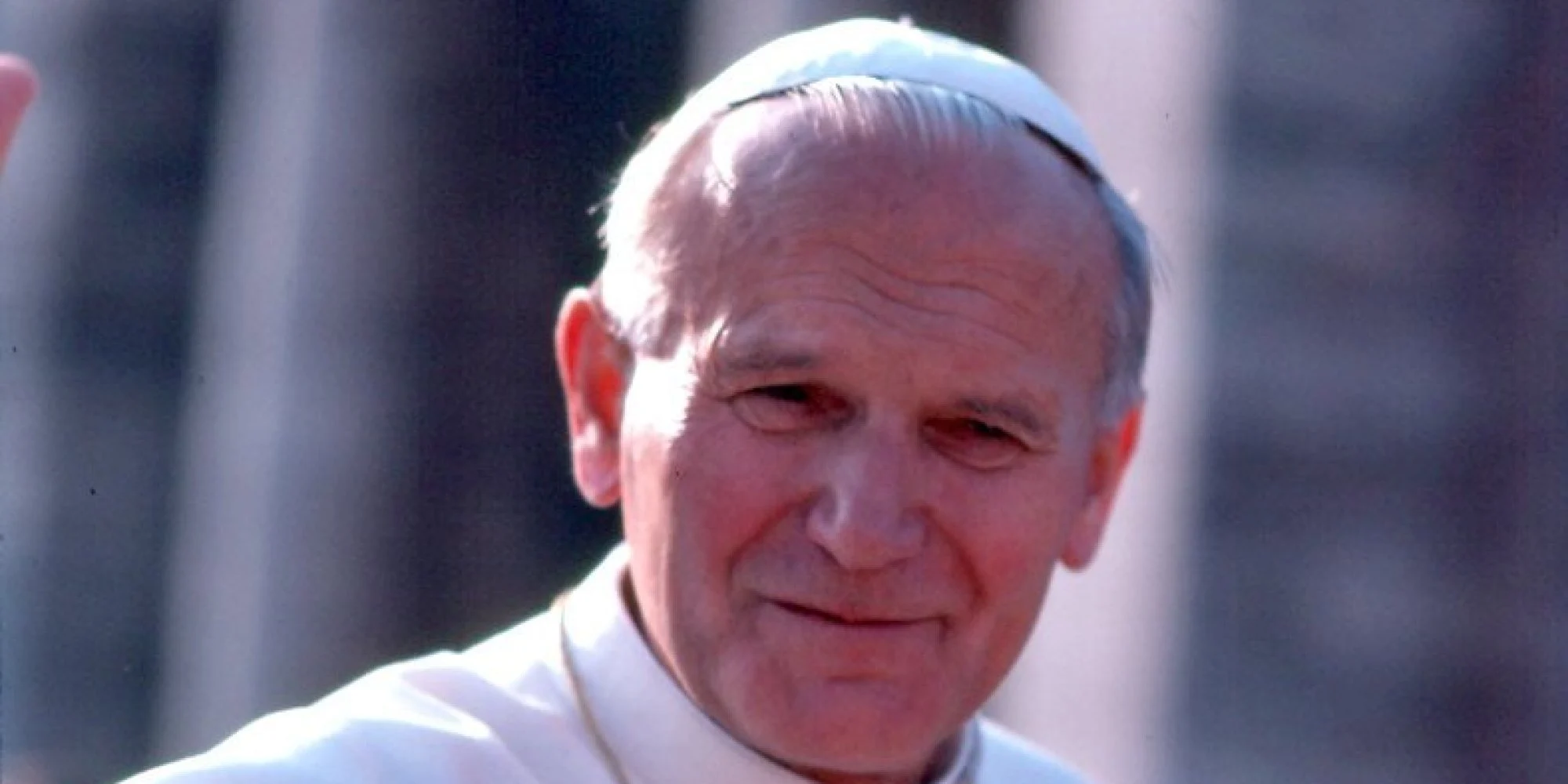Reverence Revival
Where has Catholic reverence gone? Those born after 1970 may find this question puzzling. Do we not use holy water when we enter church? During Mass we sit, kneel, and stand when required. Everyone is very friendly to one another. It seems perfectly fine.
For others from an earlier era, though, something is wanting: a standard lost over fifty years ago, leaving in its place a void. This standard inspired one to ponder to whom this house really belonged when in church. It compelled one to focus on the presence of Jesus Christ in the tabernacle. It allowed one’s heart, mind, and soul to prepare for the great mystery in which we were to participate: the Holy Sacrifice of the Mass. What is this standard that used to be taken for granted, but is rarely observed today? It is Catholic reverence.
Reverence Defined
What is reverence? Merriam-Webster defines reverence as: “Honor or respect felt or shown: DEFERENCE especially profound adoring, awed respect.”
Catholic reverence was well known because it was unique among faiths. Why did Catholics demonstrate such respect not just during Mass but in an empty church? The Catechism of the Catholic Church states:
At the Last Supper, on the night he was betrayed, our Savior instituted the Eucharistic sacrifice of his Body and Blood. This he did in order to perpetuate the sacrifice of the cross throughout the ages until he should come again, and so to entrust to his beloved Spouse, the Church, a memorial of his death and resurrection; a sacrament of love, a sign of unity, a bond of charity, a Paschal banquet “in which Christ is consumed, the mind is filled with grace, and a pledge of future glory is given to us.” (CCC 1323)
Reverence is based on Catholic belief in the Eucharist. The Catechism continues:
The Eucharist is “the source and summit of the Christian life.” The other sacraments, and indeed all ecclesiastical ministries and works of the apostolate, are bound up with the Eucharist and are oriented toward it. For in the blessed Eucharist is contained the whole spiritual good of the Church, namely Christ himself, our Pasch.” (CCC 1324)
We were reverent because we believed in the perennial truth that the Eucharist is the real presence of Jesus Christ-body, blood, soul, and divinity-present in the tabernacle. The sanctuary lamp signifies His presence, as explained in the Roman Missal: “In accordance with traditional custom, near the tabernacle a special lamp, fueled by oil or wax, should be kept alight to indicate and honor the presence of Christ.” (Roman Missal 316)
The late Fr. Benedict Groeschel, CFR, related that years ago there were many conversions because of the consistent reverence demonstrated by Catholics while in church. Only a conviction that one is in the presence of The Lord of the Universe could explain such unwavering respect. Our behavior and posture are clearly acts of faith, and signal to all the depths of our beliefs.
Fading Devotion, Vanishing Reverence
When did reverence vanish? It was incremental. As modernist ideas crept into the celebration of Mass during the last fifty years, reverence was chiseled away, one chip at a time. Changes beginning with the Mass of Paul VI (Novus Ordo Missae) were, at first, in accord with the documents of Vatican II. As time passed, various unauthorized liturgical abuses occurred, communicating to the faithful that reverence was passé.
This is not a criticism of the Novus Ordo. When properly celebrated, it is beautiful and uplifting. One need only view EWTN’s daily Mass with its attention to the sacred, the devotion of the celebrants, the use of the vernacular and Latin as authorized by Vatican II, and the outstanding choir and sacred music to see reverence on display. Modernist Masses, however, were irreverent at best, illicit at worst: clown Masses, rock Masses, mime Masses, all against the rubrics that trivialized the Sacred Mass.
Such deviations have all but disappeared by now. The current Roman Missal (Missale Romanum) promulgated by Pope Saint John Paul II in 2002, with the 2008 minor revisions of Pope Benedict XVI, incorporated numerous additional prayers, including those for recently canonized saints, plus the extended Vigil for Pentecost. (2023 LinkRM).1
Officially, the cleanup has been accomplished. In reality, reverence vanished, and the vacuum created by the course of experimentation was filled with irreverence and indifference; carelessness and comradery; disregard and disbelief.
The sad reality is that baptized Catholics have lost faith:
- A Pew Research Center survey in 20192 reported that only one-third of U.S. Catholics believe in the Real Presence.
- Russell Shaw reported in The Catholic Thing3 that Sunday Mass attendance by American Catholics dropped from 54.9% in 1970 to 21.1% pre-pandemic, with the projection that it will bottom out soon to 12%.
This and other shocking data contributed to the USCCB’s three-year Eucharistic Revival which began in 2022. While an inspired and necessary campaign, is it enough? Certainly, the Bishops gave great thought as to the reasons for the decline in belief and practice. Was the disappearance of reverence among them?
Actions demonstrate our thoughts. Has there been an honest analysis of observable behavior during Mass today? Have current acceptable practices contributed to the decline of the Catholic Church in America today?
In a civilized society, we treat those in authority respectfully: we are polite, dress appropriately, and are not rude by speaking out of turn. Why isn’t this observed in God’s house? In fact, we should approach the Holy Sacrifice of the Mass with a profound awe. For more than fifty years, good manners, respect, and common sense in church have vanished. Some behaviors can be ignored as minor annoyances, but others directly strike at the heart of Catholic teaching about the Holy Sacrifice of the Mass.
Restoring Reverence
How do we restore the reverence that we so deeply desire? What follows is a critical evaluation of several areas where we have lost our sense of the reverent. There are specific areas to address directly, and evaluation of these areas may seem harsh to some. Bear in mind that in His salvific act, Jesus spared nothing for our sakes.
Silence. Silence was observed upon entering a Catholic church because we were in God’s house and in the presence of Jesus Christ in the tabernacle. Is this taught today? Silence is rarely mentioned from the pulpit, and people appear to be completely unaware. There is talking before, during, and after Mass, often with “outside voices.” Conversations ensue to the distraction of others who wish to spend quiet time with the Lord preparing for Mass.
This behavior is not exclusive to those in the pews. Priests and ushers often are the worst offenders, socializing loudly with congregants, which is not only inappropriate but sets a bad example. The time that should be used to prepare for participation in Christ’s redemptive sacrifice on Calvary has turned into meet-and-greet time at a hotel lobby during a convention. It would be refreshing to see a sign at the entrance of each Catholic church, such as:
SILENCE
You are entering God’s house. Jesus Christ, our Eucharistic King of Kings and Lord of Lords is in the tabernacle. Please refrain from non-emergency conversation until you are outside. If you must talk, talk to Jesus. He is waiting for you.
From General Instruction of the Roman Missal:
Even before the celebration itself, it is a praiseworthy practice for silence to be observed in the church, in the sacristy, in the vesting room, and in adjacent areas, so that all may dispose themselves to carry out the sacred celebration in a devout and fitting manner. (GIRM 45, emphasis added)
If each Catholic considered the great privilege to be in God’s presence with the expectation of receiving Jesus in the Real Presence, silence would come naturally and willingly. It would be a springboard for more improvements.
The Name of Jesus. Dating back centuries, Catholics have bowed their heads at the mention of the holy name of Jesus, especially during Mass. Doing so has largely fallen out of use. Reviving such a show of respect would do much to advance reverence, discourage taking the Lord’s name in vain, and give glory to our Redeemer, not just at Mass but at all times. Details of this historical pious practice are well reported by Philip Kosloski in his Alateia’s article, Why Catholics bow.4
Music. “Music hath charms to soothe a savage breast, to soften rocks, or bend a knotted oak.” (William Congreve in “The Mourning Bride,” 1697).
There is nothing soothing about modernist music. It is insulting to God. It worships us. We sing about us. We pat ourselves on our collective backs: “we are wonderful.” What happened to Sacred Music that focuses on God? There is no shortage of traditional hymns, even in new compositions, just a lack of interest. We have exchanged angelic melodies and lyrics for songs celebrating our navel-gazing. Everyone, here’s a flash: most music used during Mass today is from the 1960-1970 era and is no longer “modern.” It’s time to throw them in the trash where they belong and return to Catholic music. As Pope Pius XII said:
The power of sacred music increases the honor given to God by the Church in union with Christ, its Head. Sacred music likewise helps to increase the fruits which the faithful, moved by the sacred harmonies, derive from the holy liturgy. These fruits, as daily experience and many ancient and modern literary sources show, manifest themselves in a life and conduct worthy of a Christian.
Music directors, keep it simple. If the goal is participation, try using hymns more than once per three-year cycle. People learn best through repetition. We sing what we know well. Also, please refrain from hymns composed with complicated melodies, two-octave scales, and a generous sprinkling of C6, all impossible for untrained voices. Consider Gregorian Chant whenever possible. Not only is it traditional but is not intimidating to the average Catholic, allowing the mind to concentrate on the words of praise. If anyone doubts that Gregorian Chant melodies are the most welcome music by Catholic churchgoers, compare how congregations sing other hymns to how they sing the Our Father chanted in English. Chant will win every time.
We also need to address the amount of music used at Mass. While there are occasions to sing every verse of a hymn, sometimes less is more, especially at distribution of Holy Eucharist. One or two verses is plenty. Antiphonal singing is another option, giving people a single line to recall, rather than juggling a hymnal in the communion line. We are receiving the body, blood, soul, and divinity of Jesus Christ. We are in communion with Him. We need both time and silence to concentrate on this intimacy.
On holy days and during seasons of the Church year, especially during Advent and Lent, music directors should select music that elicits the purpose of the day or season. The Mass of the Lord’s Supper and Good Friday are not grandstanding opportunities.
Finally, proponents of lots of music, regardless of quality, like to quote an ancient saying attributed to St. Augustine: “To sing is to pray twice.” I agree, but I’m sure he didn’t mean lousy, modernist music.
Posture. In recent times, Catholics began gesturing and arm waving during Mass. One example is during the Our Father. It began with the orans position, but has morphed into three or four different positions, with everyone doing their own thing. The most ridiculous is arms bent at the elbow with forearms and hands reaching upward. From the back, it looks like a hold-up.
Catholic.com was asked, “Should the laity use the priestly posture of hands outreached during the Lord’s Prayer, and why aren’t we instructed?” Fr. Charles Grondin responded that the Church’s silence is not the Church’s permission. The general rule of thumb is, “no other person, even if he be a priest, may add, remove, or change anything in the liturgy on his own authority” (Sacrosanctum Concilium, 22.3). He concludes that the orans posture for the people is an addition, reasoning “that the General Instruction of the Roman Missal references the orans posture with the phrase “with hands extended.” It is instructed to be done twenty-eight times and is used as a direction only for the priest(s)—the laity are never directed to pray “with hands extended.” Given that it is clearly a directive in the GIRM, to add it to any other part of the liturgy would be a violation of the above stated liturgical rule.” (Grondin)5. For a more detailed explanation, see Colin Donovan, STL’s writing at Donovan6.
Dress. The tasteless apparel worn in church these days is startling. Fr. Groeschel quipped that the poor wear their best to church; the middle-class dress as if going to the beach; and the rich look like they are returning from the beach. He was on to something. Modesty does not exist. Shorts, tee shirts (sometimes with rude language), flip flops, and worse are commonplace. Women wear inappropriate, revealing clothes. Bare shoulders and upper arms are never acceptable. Even notices in parish bulletins have been unsuccessful since these reminders are taken as suggestions. People do, however, respond to explicit instruction. Reversing course will take clear directives that inappropriate, immodest clothing will not be tolerated.
Sign of Peace. Abuses abound. The most important fact is that it is an option. The Roman Missal addresses the sign of peace in several areas:
- “…[W]hen appropriate, the priest adds, Offerte vobis pacem (Let us offer each other the sign of peace).” (GIRM 154)
- During Mass with a deacon: “…the deacon, if it is appropriate, invites all to exchange the sign of peace. (GIRM 181)
- “As for the sign of peace to be given, the manner is to be established by Conferences of Bishops in accordance with the culture and customs of the peoples. It is, however, appropriate that each person offer the sign of peace only to those who are nearest and in a sober manner.” (GIRM 82, emphasis added.)
Gerard T. Mundy’s thought-provoking article in Crisis Magazine explained that Benedict XVI, while pope, questioned the current liturgical location of the sign of peace. It’s an appropriate question since it immediately precedes the Agnus Dei, where we meditate upon Jesus as the Lamb of God and beg for mercy and peace. When we should be preparing to receive Holy Communion, the Sign of Peace serves as a distraction and turns our attention to ourselves rather than God. Pope St. John Paul II explained the solemnness of this part of the Mass in his encyclical letter Ecclesia De Eucharistia, well-worth reading. See the complete article at Mundy7.
That we belong to the Mystical Body of Christ is important when approaching the Sign of Peace. When we greet one person, we greet the entire Body. If we believe this doctrine, we must rethink and contain an out-of-control Sign of Peace that is not sober. We’re at Mass, not Woodstock.
Receiving the Eucharist. Holy Communion was received on the tongue kneeling at an altar rail, until an indult granted several decades ago in the United States to receive standing and in hand. This change unquestionably opened the door to irreverence towards the Eucharist. It has been gradual; but over time, the familiarity fostered indifference and carelessness by all parties. The solution would be to bring back altar rails and receive on the tongue. Bad habits are so imbedded in this rite that a return of reverential receiving is not likely without a return of reverence to all parts of the Mass. See Fr. Earl Fernandas’ answer to questions regarding this topic at The Catholic Telegraph via this link Fernandas8.
An interim solution in use is to provide a prayer kneeler in the communion line. The Shrine of The Divine Mercy in Stockbridge, MA, for example, utilizes a two-person prayer kneeler. In some parishes where this solution was attempted, however, Mass-goers objected to the additional time required and put more emphasis on their watches than they did on receiving the Living God. This brings up another irreverent practice: The Judas Shuffle. Nothing demonstrates a lack of belief in the real presence quite like receiving and leaving. Except for good reason, leaving before Mass is officially ended should be avoided.
This is not an exhaustive list of today’s irreverent practices that have crept into Catholic worship, but is a good start that opens the door to consider the relevance of Catholic piety, especially during the Holy Mass. What is next?
Reverence Is Contagious
Reviving reverence must be grass roots by the faithful. It would not involve rallies, meetings, investment of time, money, or travel. Catholics simply must decide to change their behavior.
- Prepare for Mass first by keeping the one hour fast (health permitting) that has been mostly discarded. For fast details see EWTN Fasting9.
- Upon arriving at church, be aware that you are in God’s house. Make an effort to observe silence.
- Spend time before Mass meditating, listening, praying, possibly a rosary, Divine Mercy chaplet, or other devotion.Prepare your heart, mind, and soul for the forthcoming celebration where heavenly and earthly liturgies meet.
- Focus on participation, absorbing the word of God through the readings, hymns, and homilies. And be aware of posture and gestures. Be sober and modest.
- When the time comes to receive the Eucharist, commit to be as reverent as possible without disturbing others. Really commune with Jesus, taking advantage of each moment to build your relationship with him. Biologically, the Eucharistic species of bread remains for about 15 minutes after reception and is why it has been suggested that same amount of time be spent in thanksgiving. For details see Philip Kosloski’s article in org10.
- When Mass concludes, continue to be reverent until outside.
If enough people commit to being reverent, in time it will return. And the by-product of reverence in church is that our attention moves from the world and ourselves to God. He becomes the most important being in our lives for one hour. We speak to Him, and He speaks to us. Our relationship matures. That is what we as Catholics should take into the world—our personal relationship with Our Lord and Savior. Our actions will declare this relationship. What we believe affects how we act. We can claim a creed, but it is our actions that demonstrate whether or not we are true believers. If our actions are disrespectful, irreverent, or, at the worst, blasphemous, no one will take our faith seriously. Conversely, reverence makes a statement. It says “I believe; and I will live what I believe.” Be bold and make this statement beginning with your next Mass. We can bring back reverence one person at a time.
End Notes
2https://www.pewresearch.org/short-reads/2019/08/05/transubstantiation-eucharist-u-s-catholics/
3https://www.thecatholicthing.org/2021/04/17/the-american-church-going-going/
4https://aleteia.org/2020/01/02/why-catholics-bow-their-heads-at-the-name-of-jesus/
5https://www.catholic.com/qa/orans-posture-at-mass
6https://www.ewtn.com/catholicism/answers/orans-posture-24798
8https://www.thecatholictelegraph.com/qa-you-may-stand-or-kneel-to-receive-communion/21161
9https://www.ewtn.com/catholicism/library/fasting-before-mass-4584





I agree things need to change back to honoring God with every bit of reverence that God deserves. I saw a guy with a T- shirt on at church with a hand and the middle finger to everyone that was in back of home and his parents didn’t even care and this guy was in his late twenties. I felt embarrassed and ashamed for all and just awful that this was happening in God’s house. I have also seen a female with her husband go up to receive the Eucharist with her top hanging out of her sun dress which is so unacceptable. I truly wish and pray that things will change for the sake of Our Dear Lord and Savior Jesus Christ because it’s so out of hand. I wish the Priest and church leaders would possibly put something up stating that your not welcome in God’s house if you don’t honor the list of things that should be utomaticly common sense. It truly a disturbance to others and it truly hurts my heart and soul to see all the things going on in the church these days. I am sure they don’t want to affend anyone or to loose donations. However look what their doing to their souls and most of all to God! I feel and know it’s better to honor God and God’s house more and if the church truly believed that God would take care of it all if they just followed his words, teachings and to give honor and reverence to Our God like God deserves then all the rest would be taken care of and would fall into place. We need to Trust In Jesus to change things but we also have to make the effort to honor and to respect God in church and at all time.